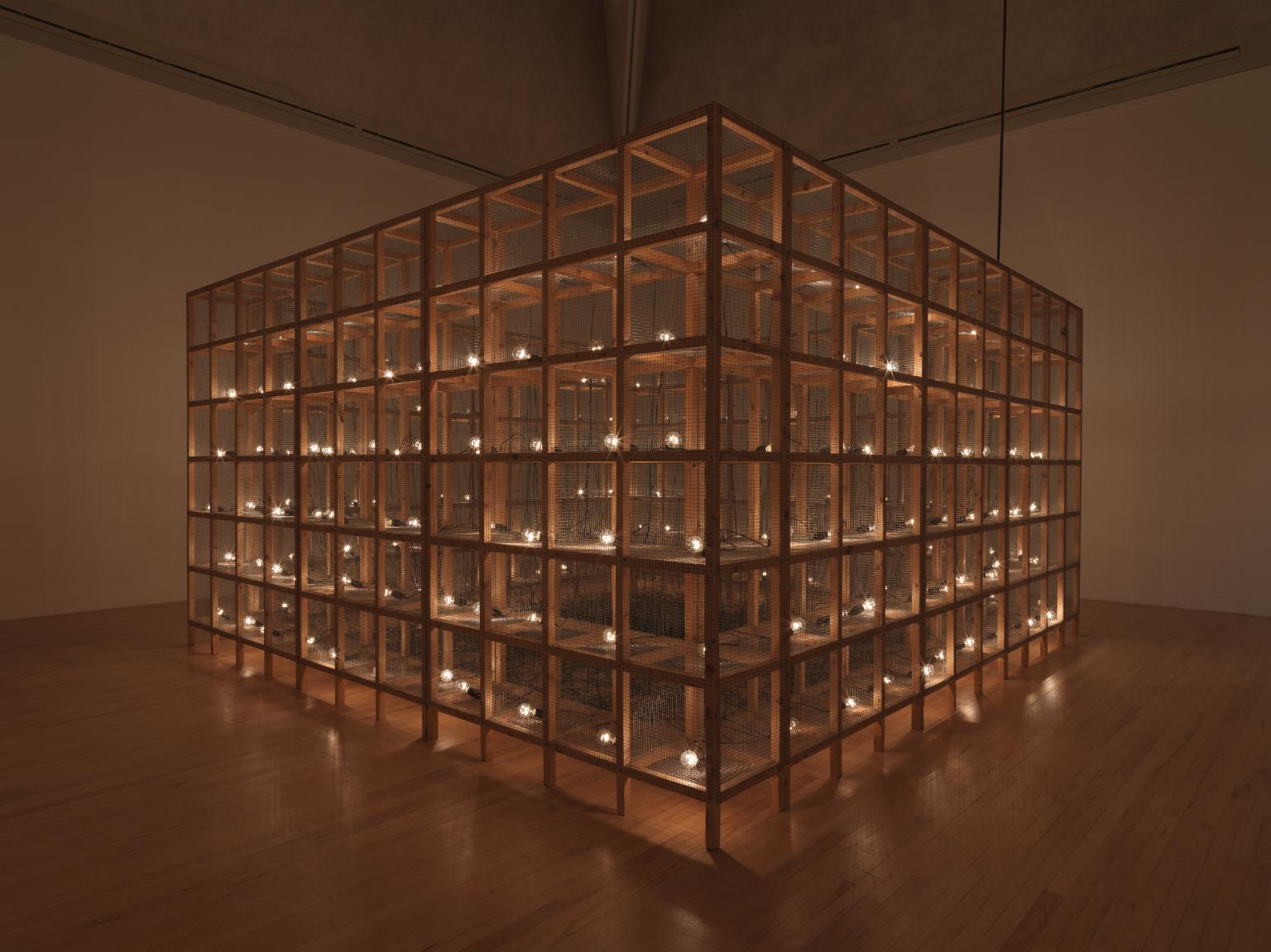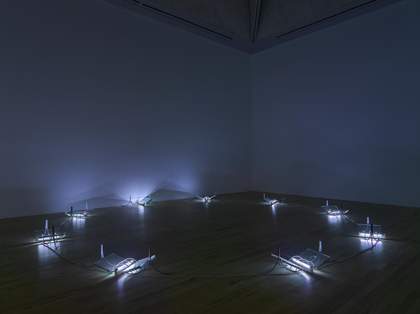Transmission explores the relationship between seeing and knowing. Hamad Butt places the supernatural and the scientific together to interrogate how both ideas and diseases can spread
Etched on each of these nine glass books is the image of a triffid, the fictional plant that blinds and eats humans. Butt borrowed the image from the cover of John Wyndhamãs novel The Day of the Triffids (1951). As you move around the circle, the triffid becomes more and less visible as the glass pages of each book turn. The books are lit by ultraviolet light. They are intended to be looked at through protective glasses. Butt said, ãUltraviolet light is an invisible light available in all light, and there is invisible knowledge available in all knowledge. The closer you get to it the more dangerous it becomes.ã
Each book sits on a rehal (Quran stand). Books can transmit religion and knowledge, yet the title also suggests a blind or hidden exchange. Butt explained, ãthere was a play with the whole notion of blind faith, in faith in written things, which I was equating with the transmission of disease.ã He was interested in how vision is privileged above other senses. In particular, he reflected on the diagnostic gaze that aims to understand and catalogue human disease through external observation.
Transmission was Buttãs earliest exploration of the causal link between science and art, reason and danger and, ultimately, life and death. He made the work when the threat and impact of the AIDS epidemic was having a devastating effect on a generation of gay and queer people.
Butt wrote the nine phrases reproduced on the wall here. When he first displayed Transmission in the 1990 student exhibition at Goldsmithãs School of Art, he inscribed them on paper soaked in sugar solution. He then sealed the paper in a glass case, along with fly pupae. Over time, the flies hatched, ate the paper and died. For Butt, this symbolised the cycles of human history.
Art in this room


